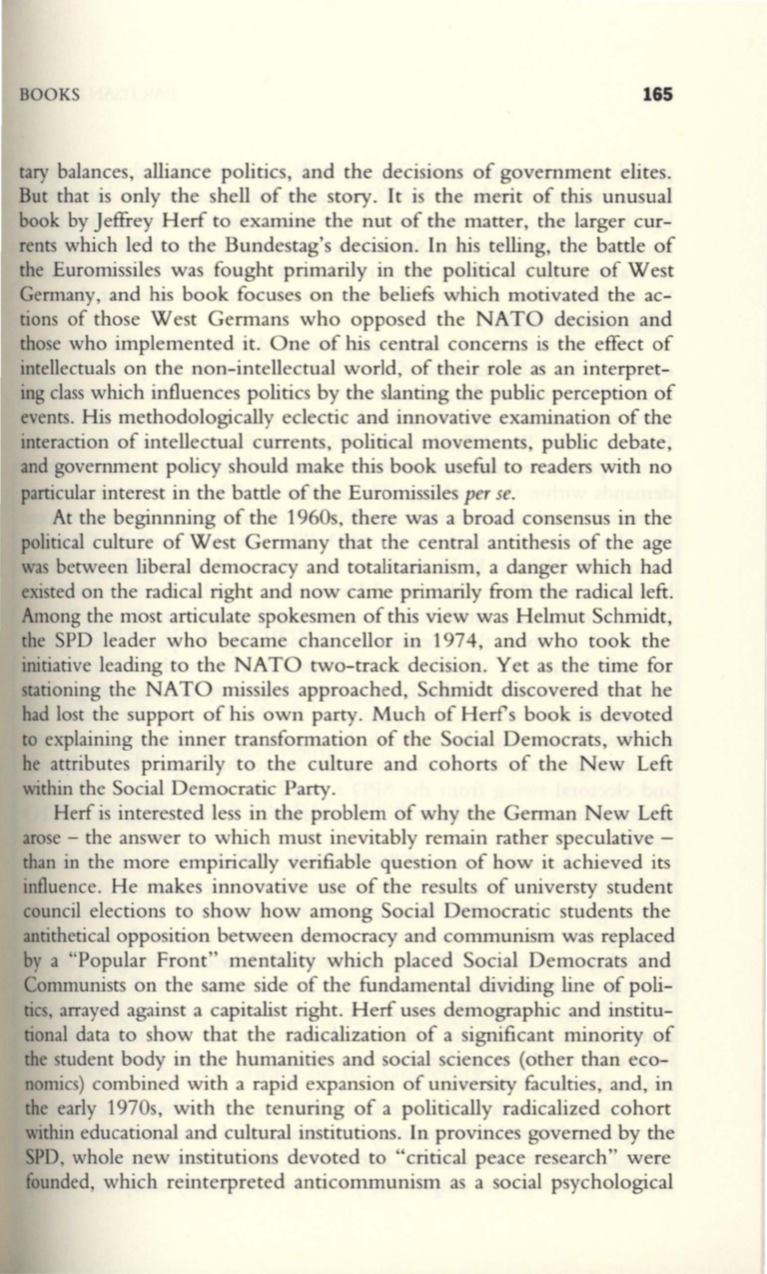
BOOKS
165
tary balances, alliance politics, and the decisions of government elites.
But that is only the shell of the story. It is the merit of this unusual
book by Jeffrey Herf to examine the nut of the matter, the larger cur–
rents which led to the Bundestag's decision. In his telling, the battle of
the Euromissiles was fought primarily in the political culture of West
Germany, and his book focuses on the beliefs which motivated the ac–
tions of those West Germans who opposed the NATO decision and
those who implemented it. One of his central concerns is the effect of
intellectuals on the non-intellectual world, of their role as an interpret–
ing class which influences politics by the slanting the public perception of
events. His methodologically eclectic and innovative examination of the
interaction of intellectual currents, political movements, public debate,
and government policy should make this book useful to readers with no
particular interest in the battle of the Euromissiles
per se.
At the beginnning of the 1960s, there was a broad consensus in the
political culture of West Germany that the central antithesis of the age
was between liberal democracy and totalitarianism, a danger which had
existed on the radical right and now came primarily from the radical left.
Among the most articulate spokesmen of this view was Helmut Schmidt,
the SPD leader who became chancellor in 1974, and who took the
initiative leading to the NATO two-track decision. Yet as the time for
stationing the NATO missiles approached, Schmidt discovered that he
had lost the support of his own party. Much of Herfs book is devoted
to explaining the inner transformation of the Social Democrats, which
he attributes primarily to the culture and cohorts of the New Left
within the Social Democratic Party.
Herf is interested less in the problem of why the German New Left
arose - the answer to which must inevitably remain rather speculative -
than in the more empirically verifiable question of how it achieved its
influence. He makes innovative use of the results of universty student
council elections to show how among Social Democratic students the
antithetical opposition between democracy and communism was replaced
by a "Popular Front" mentality which placed Social Democrats and
Communists on the same side of the fundamental dividing line of poli–
tics, arrayed against a capitalist right. Herf uses demographic and institu–
tional data to show that the radicalization of a significant minority of
the student body in the humanities and social sciences (other than eco–
nomics) combined with a rapid expansion of university faculties, and, in
the early 1970s, with the tenuring of a politically radicalized cohort
within educational and cultural institutions. In provinces governed by the
SPD, whole new institutions devoted to "critical peace research" were
founded, which reinterpreted anticommunism as a social psychological


